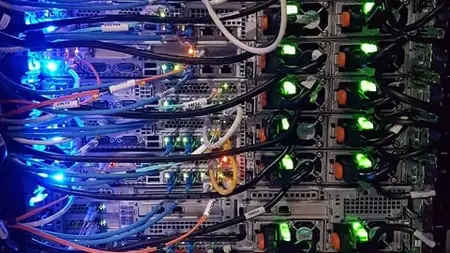Kdb+ And Q: Foundation (Level 1)
Published 8/2025
MP4 | Video: h264, 1920x1080 | Audio: AAC, 44.1 KHz
Language: English | Size: 5.63 GB | Duration: 5h 36m
Published 8/2025
MP4 | Video: h264, 1920x1080 | Audio: AAC, 44.1 KHz
Language: English | Size: 5.63 GB | Duration: 5h 36m
Just enough kdb+ and q to be dangerous in the data science and quant trading setting
What you'll learn
Program effectively in q and q-sql
Use kdb+/q to work with tables located in memory
Use kdb+/q to work with tables located on disc, such as splayed and partitioned tables
Set up kdb+ data captures and triplets using kdb+tick
Requirements
Prior programming knowledge in Python or similar languages desirable but not essential
Description
In this course we learn the foundations of kdb+ (the time series database) and q (its underlying programming language).This technology has become extremely popular in the financial services world in London, New York, Chicago, Tokyo, and elsewhere. Nearly every major bank and hedge fund have kdb+/q installed.Most of the data in finance comes in the form of time series, so the popularity of kdb+ and q is hardly surprising.As a software developer and quant, your value (including employability, salary, and consulting fee potential) increases dramatically when you learn kdb+ and q - highly specialized and highly sought after skills. Moreover, you will be that very person that can rapidly obtain a bird's eye view of the state of affairs of the entire organization.We begin by looking at the q programming language, its syntax and structures, tables, q-sql, and applications to big data (splayed and partitioned tables). We also learn who to set up tick triplets. We'll learn just enough kdb+ and q to be dangerous in the data science and quant trading setting.This course has been designed by experts with decades of trading and software development experience within financial services in the City and on Wall Street.In addition to the theoretical content, the course contains numerous exercises to help flatten the learning curve.
Overview
Section 1: Introduction
Lecture 1 Installing kdb
Lecture 2 What is kdb?
Section 2: Foundations of the q programming language
Lecture 3 Variables, types, and operators
Lecture 4 Control flow
Lecture 5 Iterators (adverbs)
Section 3: Data structures
Lecture 6 Lists
Lecture 7 Dictionaries
Section 4: Kdb as a database
Lecture 8 Tables
Lecture 9 Q-sql
Section 5: Exam
Lecture 10 Exam
Beginning kdb+/q programmers and database administrators,Professionals already working, or looking to work, with big data,Professionals already working, or looking to work, with high-frequency data,High-frequency trading (HFT) professionals,Finance professionals



